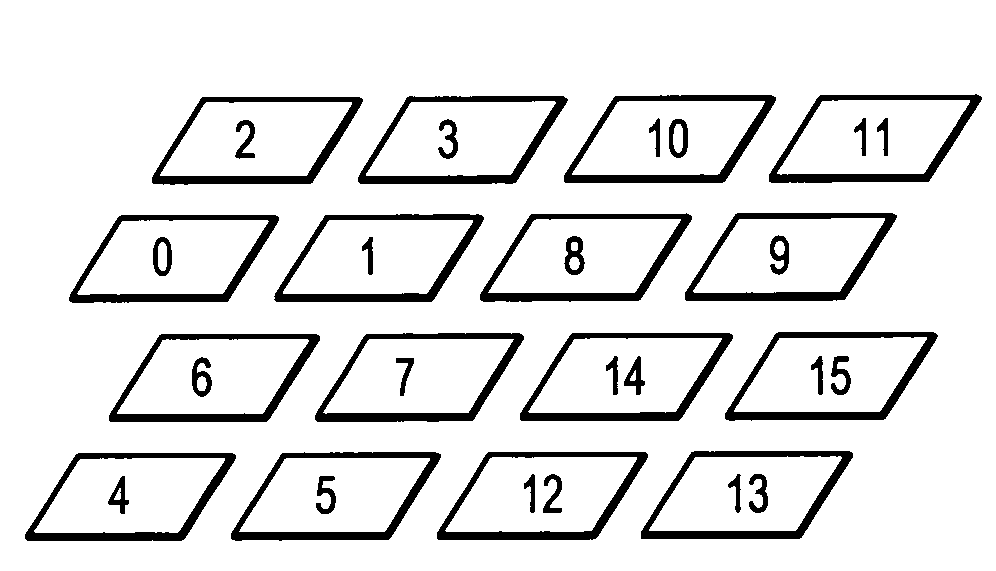System and method for cache-friendly volumetric image memory storage
a volumetric image and memory storage technology, applied in image memory management, memory adressing/allocation/relocation, instruments, etc., can solve the problems of many cache misses, high cost, and blockage of an algorithm, so as to reduce cache misses and minimize cache misses
- Summary
- Abstract
- Description
- Claims
- Application Information
AI Technical Summary
Benefits of technology
Problems solved by technology
Method used
Image
Examples
first embodiment
[0055]In the invention for non-dyadic image sizes, a straightforward approach to handling an arbitrary image size is to include the image into the smallest dyadic image that can contain it. This can have a disadvantage that much more memory than is actually needed is allocated. In the worst-case scenario, where one or more of the dimensions of the image have a size of 2n+1, a dyadic image of nearly 8 times the size of the original image has to be allocated. In an average case scenario, one can expect to allocate about three times as much memory as is routinely needed.
[0056]In a variation of this embodiment of the invention, a way to limit this supervolume cost it to limit an optimal storage ordering scheme to a fixed number of less significant bits. For example, an optimal storage ordering scheme can be limited to the last 3 bits, and a lexicographical order can then be used on these cubes. The offset scheme becomes
offset(x,y,z)=(x+Nx×(y+Ny×z))×23×3+(z3y3x3z2y2x2z1y1x1)
where the fir...
second embodiment
[0060]According to the invention for non-dyadic image sizes, one ordering scheme that minimizes the supervolume involves dividing the image into smaller dyadic cubes. If the sub-cube fits entirely inside the image, then an optimal storage ordering scheme applies. If not, then another order applies, such as the standard lexicographic ordering scheme.
[0061]Another embodiment of the invention that minimizes the use of a supervolume to that necessary to contain the original volumetric data starts from an optimal storage order for a cubic dyadic image. Recall that the offset for this case can be defined by the formula
[0062]offset(x,y,z)=∑i(23ixi+23i+1yi+23i+2zi).
Note that the coefficient associated with a coordinate bit corresponds to the number of elements that can be scanned up to that bit, so that an increment of this bit yields a jump of the size of this coefficient. A modification of this formula according to this embodiment of the invention involves defining
└x┘G=x−x mod G
a...
PUM
 Login to View More
Login to View More Abstract
Description
Claims
Application Information
 Login to View More
Login to View More - R&D
- Intellectual Property
- Life Sciences
- Materials
- Tech Scout
- Unparalleled Data Quality
- Higher Quality Content
- 60% Fewer Hallucinations
Browse by: Latest US Patents, China's latest patents, Technical Efficacy Thesaurus, Application Domain, Technology Topic, Popular Technical Reports.
© 2025 PatSnap. All rights reserved.Legal|Privacy policy|Modern Slavery Act Transparency Statement|Sitemap|About US| Contact US: help@patsnap.com



